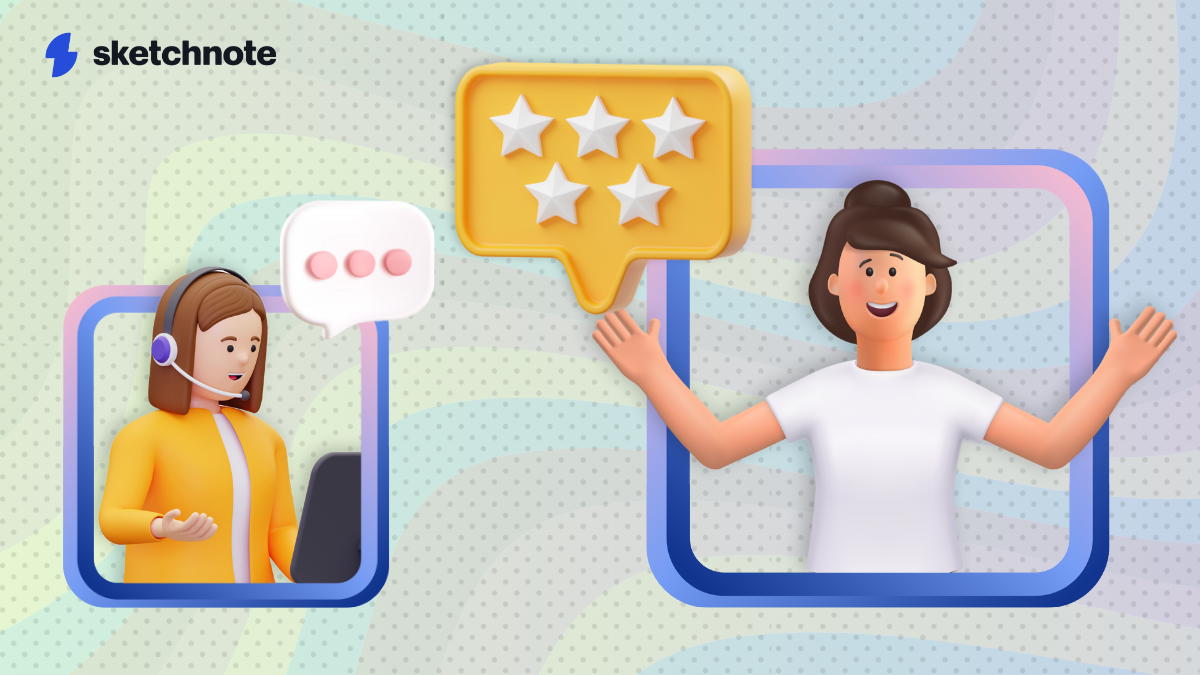Over the years, client feedback has emerged as a cornerstone for the growth and refinement of agency services. By actively seeking and addressing constructive feedback, you can foster enhanced client satisfaction and strengthen your service offerings.
This handy guide will provide you with effective strategies to gather, analyze, and implement client feedback, ultimately positioning your agency for greater success and stronger client relationships.
Key Takeaways:
- Active Listening: Practice active listening techniques to ensure clients feel heard and valued, fostering a culture of openness and trust.
- Acknowledgment of Feedback: Always acknowledge and thank clients for their feedback, showing them that their input is important and drives improvement.
- Continuous Improvement: Establish a systematic feedback loop to regularly collect, analyze, and act on client feedback, leading to ongoing enhancements in services and client satisfaction.
- Use Agency Management Trackers to Collect Feedback: To make the best of the feedback you receive from clients, it's important to record and catalog them. On Sketchnote, you can create tickets or tasks out of the feedback received, and directly assign them to your team to work on them.
Understanding Client Feedback
For any agency striving for improvement, understanding client feedback is imperative. It allows you to identify strengths and weaknesses in your services while fostering trust and long-term relationships. By analyzing the feedback you receive, you can tailor your offerings to better meet your clients' needs.
Types of Client Feedback
Clearly, client feedback can manifest in various forms, each providing valuable insights into your services:
| Feedback Type | Description |
| Surveys | Structured questions to gauge client satisfaction. |
| Interviews | In-depth discussions for qualitative insights. |
| Feedback Forms | Written input from clients after service delivery. |
| Direct Conversations | Informal chats to catch real-time feedback. |
| Social Media | Client opinions shared publically on platforms. |
- Surveys can provide quantitative data but may lack depth.
- Interviews yield rich insights but require more time.
- Feedback forms are great for structured responses.
- Direct conversations foster openness but are less formal.
- Social media offers visibility but may need moderation.
Any method you choose should align with your specific needs and objectives.
Importance of Constructive Criticism
Now, understanding the role of constructive criticism is fundamental for your agency’s growth. Effective feedback not only highlights areas needing improvement but also recognizes successes that merit celebration.
Feedback serves as a compass, guiding you toward understanding client expectations and enhancing service delivery. By leveraging constructive criticism, you can make informed decisions that resonate with clients. This ongoing dialogue not only elevates your service quality but also fosters long-lasting relationships built on trust and mutual respect. Engaging with clients and valuing their insights empowers you to continuously adapt and innovate, making your agency more competitive and responsive to market dynamics.
Methods of Gathering Client Feedback
Assuming you want to improve your agency's services, gathering client feedback is important. Effective feedback collection can guide your improvements and ensure that your clients feel valued and heard. Here are some popular methods you can employ to gather meaningful insights.
Surveys and Questionnaires
Feedback surveys and questionnaires are one of the most common methods for gathering client insights. They allow you to gather quantitative and qualitative data, which can help you identify overall trends in client satisfaction and areas needing improvement.
Interviews and One-on-One Conversations
Some agencies find that personal interviews and one-on-one conversations yield more in-depth feedback. These interactions allow clients to share their thoughts and feelings in a more relaxed environment, fostering open communication and honesty.
Another benefit of interviews is that they give you the opportunity to probe deeper into specific issues, allowing for clarifications that surveys may miss. This qualitative feedback can be invaluable as it uncovers the underlying motivations and experiences that lead to client satisfaction or dissatisfaction.
Feedback Forms and Online Tools
Surveys can also be conducted through feedback forms and online tools, like Sketchnote, which make data collection efficient and user-friendly. These platforms can help streamline the process, allowing you to reach more clients and analyze results quickly.
With tools like Sketchnote, you can customize forms to address specific areas of your services, making it easier to gather targeted feedback. Moreover, these platforms often offer data visualization options that can aid in interpreting the results effectively.
Informal Conversations and Check-Ins
Conversations during casual check-ins can also provide valuable insights. These informal discussions can happen during regular meetings or even casual interactions, creating a space for feedback that feels less structured and more authentic.
To further enhance this method, ensure that you prioritize rapport with your clients. When they trust you, they are more likely to share candid feedback, which can lead to more genuine improvements in your services.

Timing and Frequency of Feedback Collection
All agencies must be strategic about when and how often they collect client feedback to maximize its value. By thoughtfully considering the optimal timing and frequency of gathering feedback, you can enhance your ability to adapt and improve services. This approach not only demonstrates your commitment to client satisfaction but also establishes a culture of continuous improvement within your agency.
Optimal Timing for Feedback Requests
Little can be more effective than requesting feedback immediately after project completion or during key milestones. This approach allows you to capture your client’s thoughts while their experience is still fresh, leading to more thoughtful and relevant feedback. Utilize this timing to gauge satisfaction and identify potential areas for improvement.
Frequency of Feedback Intervals
Clearly, determining the right frequency for collecting feedback is vital to maintaining a responsive relationship with your clients. Regular intervals, such as quarterly or after significant project phases, help you stay aligned with client needs while making necessary adjustments to your services.
Timing plays a crucial role in the frequency of feedback intervals. By establishing consistent intervals for feedback collection, you create a rhythm that allows clients to share their thoughts without feeling overwhelmed. Consider embedding feedback requests into your regular communications, such as monthly newsletters or check-ins. This way, clients will anticipate your requests and feel encouraged to provide ongoing insights, ultimately supporting your agency’s growth and improvement.
Creating a Feedback-Friendly Environment
Once again, fostering a feedback-friendly environment is vital for encouraging constructive dialogue between you and your clients. When clients feel comfortable sharing their thoughts, it not only helps you improve your services but also strengthens the trust and rapport you have built with them. By prioritizing an atmosphere where feedback is welcomed and appreciated, you pave the way for deeper collaboration and ultimately greater client satisfaction.
Encouraging Honest Communication
Honest communication is the backbone of effective feedback. To encourage your clients to express their thoughts candidly, reassure them that their input is valued and important for improvement. Use open-ended questions and create a safe space for discussions, which will empower your clients to provide the genuine feedback that your agency needs.
Building Trust and Transparency
For a feedback-friendly environment, building trust and maintaining transparency with your clients is paramount. When clients see that you are open about your processes and values, they are more likely to share their honest opinions, knowing that their voice truly matters.
Another crucial aspect of building trust and transparency is consistent communication. Share both successes and challenges with your clients, and invite them to be part of the solution. Let them know how their feedback has led to specific changes, reinforcing the idea that their opinions shape your services. This fosters a collaborative culture, enhancing loyalty and satisfaction, which ultimately leads to long-term client relationships.
Active Listening Techniques
Importance of Active Listening in Feedback
Many clients express their insights and concerns during feedback sessions, making it crucial for you to understand their perspective. By engaging in active listening, you foster trust and demonstrate that you value their opinions. This approach not only enhances client satisfaction but also enables you to identify specific areas for improvement, ultimately leading to better service offerings.
Techniques for Practicing Active Listening
Even with the understanding that feedback is necessary, actively listening can sometimes be overlooked. You can improve your listening skills by employing techniques that help you fully engage with the client's message. This practice is vital for building effective communication and stronger relationships.
The key techniques for practicing active listening include maintaining eye contact, nodding in acknowledgment, and summarizing what the client has said. By asking clarifying questions, you confirm your understanding and show genuine interest. Additionally, taking notes can help you retain important points and demonstrate that you are taking the feedback seriously. These tactics not only improve the feedback process but also create an environment where clients feel valued and understood.
Analyzing and Implementing Client Feedback
Now that you've gathered client feedback, it's time to analyze and implement it effectively to enhance your services. This involves categorizing the feedback for better insights, prioritizing what to address first, developing a robust action plan, and communicating your changes to clients. Each of these steps plays a pivotal role in transforming feedback into actionable improvements that can bolster your agency's reputation and client satisfaction.
Categorizing Feedback for Better Insights
Any feedback you receive should be categorized to identify trends and common themes. By grouping feedback into specific categories such as service quality, communication, and timeliness, you can pinpoint areas that require immediate attention and improvement. This method allows you to gain a clearer understanding of your client's needs and expectations, setting the stage for targeted enhancements.
Prioritizing Feedback Based on Impact
Even with a variety of feedback, not every piece will demand immediate action. Prioritizing is crucial to ensure that your resources address the most critical issues first. Focus on feedback that significantly impacts client satisfaction and can be feasibly implemented. This allows you to manage your time effectively while demonstrating your commitment to continuous improvement.
Implementing a prioritization framework can help you evaluate feedback based on both urgency and importance. Consider using a scoring system to assess each piece of feedback, weighing its potential impact on client experience against the effort required for implementation. By addressing high-impact items first, you can see quicker improvements and foster stronger client relationships.
Developing an Action Plan for Improvements
Action plans are crucial for translating feedback into tangible changes. Begin by setting clear objectives based on the prioritized feedback. Assign responsibilities to team members, establish deadlines, and create a monitoring system to track progress. By having a structured approach, you ensure that improvements are not only planned but also executed in a timely and effective manner.
Developing your action plan should involve consistent team discussions and updates on progress. Review your objectives with your team regularly to ensure accountability and alignment. Encourage each member to share insights based on their experiences with clients, as this collaborative approach can lead to innovative solutions and a more robust improvement process.
Communicating Changes to Clients
The way you communicate changes back to clients is just as important as the changes themselves. Keep clients informed about the steps you're taking in response to their feedback, which reinforces their value in your process. Use various channels, such as emails, newsletters, or meetings, to share what adjustments you are implementing based on their input.
Another effective strategy is to solicit follow-up feedback after changes are made. This not only shows clients that you are serious about their feedback but also gives them a chance to share their insights on the improvements. By fostering this ongoing dialogue, you create a more engaged client relationship, demonstrating your dedication to continuous improvement and excellent service.

Continuous Improvement Practices
Keep your agency dynamic by establishing a continuous feedback loop with your clients. This loop allows you to regularly gather and assess client input, fostering an ongoing dialogue about their needs and expectations. By regularly checking in, you signal to clients that their opinions matter, leading to deeper insights and a more responsive approach to your services.
Training and Development for Team Members
Development is key when it comes to successfully handling client feedback. By investing in training programs, you enhance your team's ability to engage with clients meaningfully and incorporate their feedback into service improvements. This not only boosts employee confidence but also promotes a culture of excellence and responsiveness within your agency.
Another vital aspect of training is ensuring your team understands how to analyze and categorize client feedback effectively. Workshops and seminars can provide your staff with the necessary skills to interpret data and implement changes swiftly. Empowering your team in this way fosters ownership and encourages them to take initiative in enhancing client satisfaction, ultimately leading to stronger, long-term relationships with clients.
Conclusion
Ultimately, effectively handling client feedback is important for enhancing your services and fostering lasting client relationships. By actively listening, acknowledging input, and implementing strategic changes, you can transform feedback into valuable insights that drive your agency's growth. Embrace a culture of continuous improvement, and you will not only satisfy your clients but also position your agency for long-term success.
FAQ
Q: Why is collecting client feedback crucial for my agency?
A: Collecting client feedback is crucial for several reasons. Firstly, it helps identify areas of improvement within your services, allowing you to make informed adjustments that enhance client satisfaction. Secondly, feedback fosters trust and transparency between your agency and clients, as it shows you value their opinions. Lastly, it helps build long-term relationships by demonstrating your commitment to continuously improving your services based on client needs and expectations.
Q: What are some effective methods for gathering client feedback?
A: There are several effective methods for gathering client feedback, including surveys, interviews, feedback forms, and direct conversations. Surveys are efficient for quantitative data but may lack depth, while interviews can provide more detailed insights but may require more time. Feedback forms are straightforward and can be distributed post-project; however, direct conversations foster immediate dialogue, which can lead to more dynamic feedback. Choosing the right method depends on your agency's specific needs and the type of feedback you wish to obtain. Consider combining methods for a well-rounded approach.
Q: How can I ensure my clients feel comfortable providing honest feedback?
A: Creating a feedback-friendly environment is key to encouraging honest client input. Start by establishing transparency and openness during interactions. Make sure to express that you welcome all feedback, whether positive or constructive. Avoid defensive reactions to criticism; instead, practice active listening by maintaining eye contact, nodding, and summarizing client comments to show you understand their perspective. Additionally, assure clients that their feedback will be used responsibly and considerately, which will help them feel valued and respected in the feedback process.



